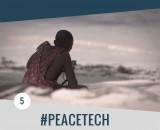Talking to Each Other: Developing Effective Education and Training Programs for Conflict Prevention, Stabilization, and Resolution

The beginning of a new term for President Barack Obama marks a chance to assess the development of an integrated U.S. approach to conflict prevention and resolution. The mission remains the same: to forge a federal, private, and international effort toward peacebuilding and conflict resolution that effectively uses all facets of the community it has created to prevent and resolve destructive conflicts. The administration must find ways to make limited resources across the federal government stretch farther and accomplish more. There is much work to be done, but practitioners understand well that the solutions lie in integration, collaboration, and sharing knowledge.
Peacebuilding and conflict resolution remains a discombobulated field. A wide variety of operators—the U.S. government, foreign militaries, non-governmental organizations (NGOs), federal aid missions, foreign ministry missions—have implemented a multitude of programs, with the best of intentions but regrettably often with results that can slow the mission and more often than not conflict with one another. Each of the different government agencies and others operating in a conflict environment has separate education and training requirements. The disparities are significant. The related approaches are not rooted in a common set of guiding principles, definitions, or beliefs, and often can lack the appropriate cultural training. Almost none of the education and training is done collaboratively, that is, with more than one or two critical agencies or other operators in the same room. Thus, when the operators are brought together in the field, their tactical approaches can inadvertently contradict the tactics of other agencies and operators, undermining the overall mission.
The use of aid offers a simplistic example. Say one operator, be it an NGO, military, or aid group, withholds aid for a project—perhaps on a deep-water well in a village—in return for better cooperation on security or other issues. Another operator, unaware of the struggles of the first, provides the aid in an effort to improve living conditions in the village. This undermines the first operator. The leverage for a strategic goal is lost due to the good intentions of one operator, and it could have been prevented if the two operators had coordinated with each other.
There is much work to be done, but practitioners understand well that the solutions lie in integration, collaboration, and sharing knowledge.
Another example lies in gathering information and intelligence. As Major General Michael T. Flynn, Captain Matt Pottinger, and Paul D. Batchelor note in Fixing Intel: A Blueprint for Making Intelligence Relevant in Afghanistan, operators in Afghanistan do not collate the local-level information they have, and that field practitioners need, even though, intuitively, NGOs, military units, and aid groups could be more effective if they had the information all operators working in Afghanistan learned before them. The professionals leaving the country have knowledge about best practices, key contacts, and lessons that could enhance the ongoing mission and the work of practitioners newly arrived in the country. But this information is not systemically captured, even from one deployment to the next in many cases—let alone among organizations—nor is it incorporated into ongoing education and training back in home countries.
The Quadrennial Diplomacy and Development Review (QDDR) codified the need for government agencies to develop effective education and training programs for conflict prevention, stabilization, and resolution. Taking on this issue first would help the Obama administration to ensure that multiple parts of the U.S. government improve their understanding of conflict prevention, stabilization, and resolution, as well as their abilities in the field. To this end, a new administration should be looking to:
- Identify an executive agent in the federal government to systematize a holistic approach based on best practices that could replace agencies’ currently ad hoc education on conflict prevention, resolution, and stabilization.
- Facilitate precrisis education and training among agencies to ensure a broad base of practitioners exists at all agency levels, which sets the groundwork to facilitate rapid expansion into predeployment training for a specific crisis; and
- Create a process to capture and collate what departing professionals have learned regarding best practices and key contacts, to be used in precrisis and predeployment education and training.
If all agencies and organizations involved in conflict prevention, resolution, and stabilization apply the same holistic approach to precrisis education and training, then all actors can be aware of the experiences and best practices from previous crises, allowing them to better examine the situation they face and adapt past lessons to current crises. There are institutions, such as the United States Institute of Peace, that could start this process among federal players and incorporate the efforts of NGOs, international actors, and others. With economic resources tightening, now is the time to focus on improving the performance of existing agencies and making practitioners more capable in their conflict prevention, stabilization, and resolution work in Washington and abroad. Efforts like the creation of this journal are yet another way to help integrate the community of players, and in time, guide the alignment of federal training and education toward greater collaboration.


we believe that if every one should respect the fundamental rights of everyone there will be a permanent peace in all over the World